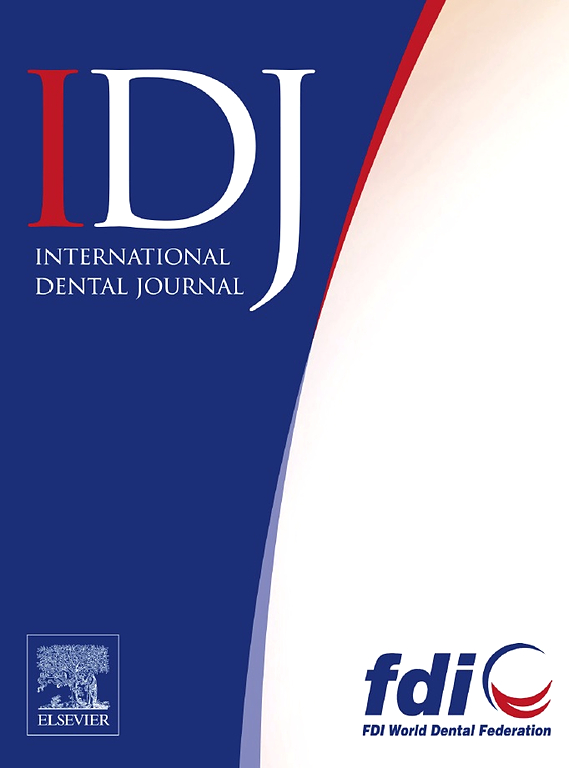微生物组与口腔-口咽癌的因果关系:一项孟德尔随机研究。
IF 3.2
3区 医学
Q1 DENTISTRY, ORAL SURGERY & MEDICINE
引用次数: 0
摘要
简介和目的:本研究旨在利用孟德尔随机化(MR)研究口腔微生物群与口腔和口咽鳞状细胞癌(OOPSCC)风险之间的因果关系。方法:利用单核苷酸多态性作为工具变量,采用MR逆方差加权方法评估唾液和舌头微生物组对OOPSCC的影响。数据来自CNGBdb数据库和UK Biobank,使用R软件包“TwoSampleMR”进行分析。为了确保研究结果的稳健性,我们进行了敏感性研究,其中包括MR-Egger截距检验,以建立强相关性并消除水平多效性现象。结果:我们的大规模MR研究揭示了来自唾液和舌头的13个微生物类群与OOPSCC之间的遗传易感性因果关系。值得注意的是,唾液和舌头微生物群中包括普雷沃氏菌、奈瑟氏菌、细孔菌、肉芽菌、密螺旋体和链球菌在内的6个属的微生物类群显示出这种关系。相反,一些分类群,包括嗜血杆菌、梭菌、弯曲杆菌和卟啉单胞菌,主要表现出反比关系,表明有保护作用。通过敏感性分析进一步证实了我们研究结果的稳健性,为我们的结果提供了额外的信心。结论:我们的MR研究表明,口腔微生物群对口腔癌和口咽癌的风险有显著的因果影响。我们发现的与OOPSCC相关的微生物生物标志物有可能揭示潜在的机制,并为靶向治疗这些恶性肿瘤的新治疗方法铺平道路。本文章由计算机程序翻译,如有差异,请以英文原文为准。
Causal Association Between Microbiome and Oral-Oropharyngeal Cancer: A Mendelian Randomization Study
Introduction and aims
This study aimed to examine the causal link between oral microbiome and the risk of oral and oropharyngeal squamous cell carcinoma (OOPSCC) using Mendelian randomization (MR).
Methods
Utilizing single nucleotide polymorphisms as instrumental variables, we applied the MR inverse-variance weighted approach to assess the impact of salivary and tongue microbiome on OOPSCC. The data were obtained from the CNGBdb database and the UK Biobank, and analytical procedures were performed using the R package ‘TwoSampleMR’. To ensure the robustness of our findings, we conducted sensitivity studies, which included the MR-Egger intercept test, to establish strong correlations and eliminate the phenomenon of horizontal pleiotropy.
Result
Our large-scale MR study revealed a genetically predisposed causal relationship between 13 microbial taxa, each from saliva and tongue, with OOPSCC. Notably, microbial taxa from six genera, including Prevotella, Neisseria, Veillonella, Granulicatella, Treponema, and Streptococcus, in both salivary and tongue microbiomes, showed this relationship. Conversely, several taxa, including Hemophilus, Solobacterium, Campylobacter, and Porphyromonas, predominantly demonstrated an inverse relationship, suggesting a protective effect. The robustness of our findings was further confirmed through sensitivity analyses, providing additional confidence in our results.
Conclusion
Our MR study indicates that the oral microbiota has a significant causal impact on the risk of oral and oropharyngeal cancers. The microbial biomarkers we identified, which are linked to OOPSCC, have the potential to uncover the underlying mechanisms and pave the way for new therapeutic approaches for targeted treatment of these malignancies.
求助全文
通过发布文献求助,成功后即可免费获取论文全文。
去求助
来源期刊

International dental journal
医学-牙科与口腔外科
CiteScore
4.80
自引率
6.10%
发文量
159
审稿时长
63 days
期刊介绍:
The International Dental Journal features peer-reviewed, scientific articles relevant to international oral health issues, as well as practical, informative articles aimed at clinicians.
 求助内容:
求助内容: 应助结果提醒方式:
应助结果提醒方式:


